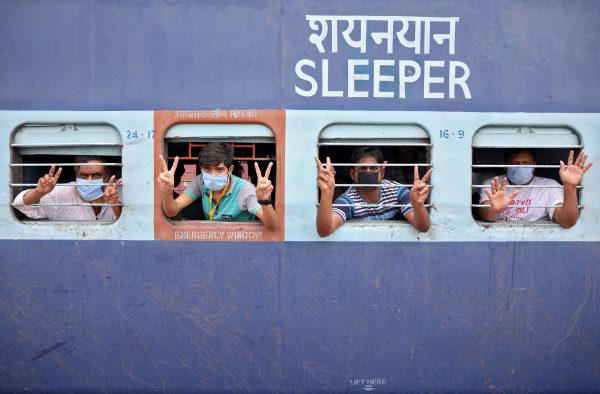Reliable data on migrants and the rural-urban population distribution could have helped in arriving at better estimates of the number of people who would leave cities during a lockdown, their rural destinations and the resources required where migrants would become stranded. India’s urban planners and administrators struggle with unreliable statistics on slums where population is undercounted and misclassified. Moreover, the latest urban population statistics are outdated and poorly understood — the government took more than seven years to release the 2011 census data on language and migration that are crucial to understand the changing nature of India’s cities.
Urban local bodies are underfunded because of the overestimation of the rural population share that distorts the allocation of electoral seats and government funds. This has affected the scale and quality of public infrastructure and services in urban areas. Data on urbanisation and migration, therefore, merit greater attention.
In 2011, the Census of India reported that ‘for the first time since independence, the absolute increase in population is more in urban areas [than] that in rural areas’. Urban areas accounted for about 31 per cent of India’s population in 2011. But the census likely underestimates the true urban population share as it follows restrictive criteria to identify urban settlements.
The census considers an area to be urban if it is a statutory town (has a municipality, municipal corporation, cantonment board, notified town area committee, etc) or a census town (population of at least 5000, with 75 per cent of male main workers engaged in non-agricultural activities and a population density exceeding 400 per square kilometre).
Alternative estimates that relax these criteria or use more recent techniques like the assessment of night light data suggest that India’s urban population share could be as high as 70 per cent. The Economic Survey 2016–17 released by the Ministry of Finance showed that measures of urban population share are highly sensitive to census definition criteria and argued that ‘traditional measures are inadequate’ given rapid urbanisation.
In addition, there are possible errors in the census due to double-counting and under-counting of migrants. India follows an extended de facto (synchronous) method of counting. People are counted where they are during the census. This design should minimise double-counting but often fails to prevent seasonal and even long-term migrants from being counted in both their place of work and their place of origin. Double-counting is a widespread problem in many states. It is partly explained by the poor training of census enumerators. But the benefits of being counted twice play a more important role.
Out-migrants are often counted in their native villages and also enrolled as voters there. Village communities seek to protect votes which determine their bargaining power within the local political economy and headcount-linked welfare funding. Moreover, once the allocation of headcount-linked benefits is reduced, the government cannot be persuaded to increase them at short notice when migrants return during economic or political crises, as is happening in response to the pandemic. So communities and families often exaggerate headcounts.
Migrants want to be recorded in villages as they fear marginalisation in cities where local communities may restrict their political voice. They also have other incentives to get counted at ‘home’. It gives them access to villages, which offer safe havens in turbulent times, and protects their claims upon agricultural land, which guarantees access to food and employment. Being registered in certain rural and remote areas also provides access to affirmative action benefits.
Further, migrants try to retain a connection (in the form of documentary evidence of domicile such as voter identification cards) with villages where they may have property because of the stringent restrictions on the sale of agricultural land. Income tax laws provide incentive for even the wealthy migrants to retain membership of village communities and ownership of agricultural land as they can reduce their tax burden by reporting unaccounted income as agricultural income that is non-taxable.
If double-counting of migrants in rural areas is corrected, the urban population share will increase even under the current definition used in the census. Better counting of those living in slums and ethnically different migrants in cities will further increase the urban population share. These corrections will also increase the population shares of the southern and western states that are net recipients of interstate migrants and arrest their declining shares in federal redistribution.
Given the growing trend of rural-urban and interstate migration, the double-counting and undercounting of migrants needs attention if India wants to better manage its cities. The poor will continue to keep a foot in villages and smaller towns given the sluggish growth in jobs in the formal sector in urban India. The government needs to account for this fluidity in planning and redistribution. Addressing this problem in the 2021 census requires better training and supervision of enumerators, awareness campaigns to sensitise communities and a better understanding of sub-groups of the population — such as first-generation, low-income migrants from villages and smaller towns — that are vulnerable to being miscounted.
Ankush Agrawal is Assistant Professor at the Indian Institute of Technology Delhi.
Vikas Kumar is Assistant Professor at Azim Premji University, Bengaluru.
They are co-authors of Numbers in India’s Periphery: The Political Economy of Government Statistics (Cambridge University Press, 2020).

